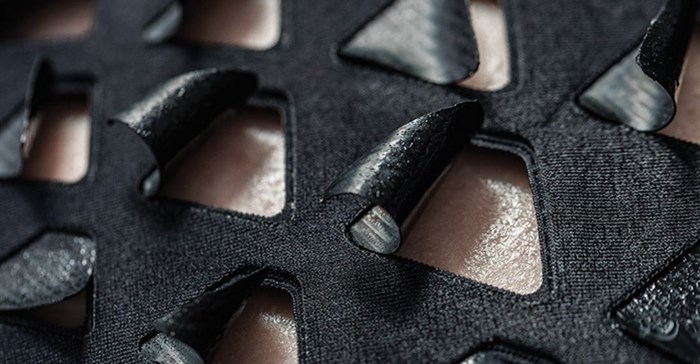This breathable workout suit helps you cool down after a sweaty gym session

In 2016, researchers at the Massachusetts Institute of Technology (MIT) developed a method of rapidly designing complex, DNA-encoded circuits that would allow them to assign new functions to live cells. Able to be quickly produced in vast quantities, these live cells can perform multiple functions, such as responding to specific environmental conditions. Now, researchers from the same institution have utilised these cells in the development of a new, breathable workout suit.
Termed bioLogic, the project was led by Wen Hang, a former research scientist at MIT’s Media Lab and Department of Chemical Engineering. According to his research, the cultivated, moisture-sensitive cells require no additional elements to sense and respond to humidity. After observing the tendency of live cells to alter their structures in the presence of humidity, Hang and his team were certain these could aid in the development of a moisture-responsive fabric.
Working with a common, nonpathogenic strain of E. coli, the researchers observed it swell and shrink in response to moisture. These live cells were then printed onto sheets of rough, natural latex which was then worked into a wearable garment. The resulting running suit features cell-lined latex ventilation flaps; the size and degree to which they open are specifically tailored to areas of the body where heat and sweat are produced.

“People may think heat and sweat are the same, but in fact, some areas like the lower spine produce lots of sweat but not much heat,” explains former graduate student and bioLogic team member Lining Yao. “We redesigned the garment using a fusion of heat and sweat maps to, for example, make flaps bigger where the body generates more heat.”
Able to sense and react to humidity in the air just above the skin, special support barriers prevent the garment’s inner cell layer from making direct contact with the wearer’s skin – while the cells themselves have been proven perfectly safe to touch and even consume.
The bioLogic team has also succeeded in integrating this moisture-responsive fabric into a prototype of a running shoe and they are now looking to collaborate with sportswear companies to commercialise their products.
Biologic from Tangible Media Group on Vimeo.
Source: Design Indaba

Design Indaba inspires and empowers people to create a better future through design and creativity. We are an online publication (www.designindaba.com) with an annual festival and social impact Do Tank.
Go to: www.designindaba.com



















